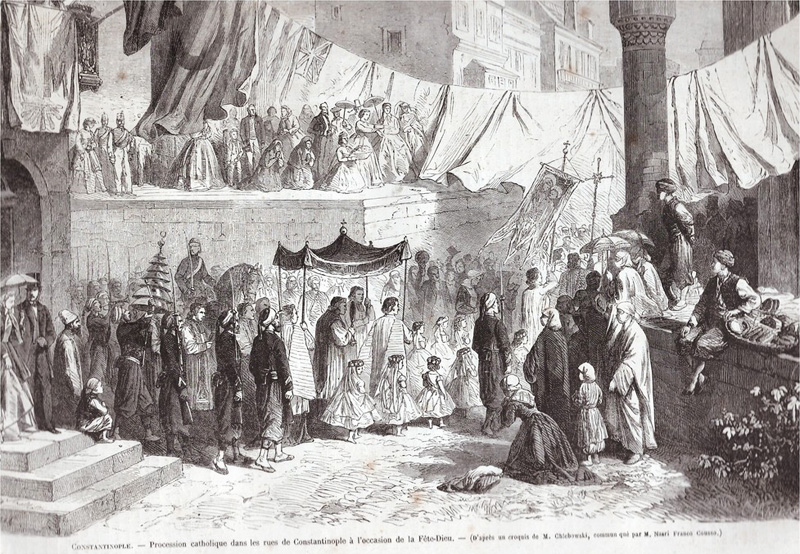 |
An etching from 1865 published in the ‘Monde l’illustré’ of a Catholic street procession on the occassion of the Feast of Corpus Christi in Constantinople.
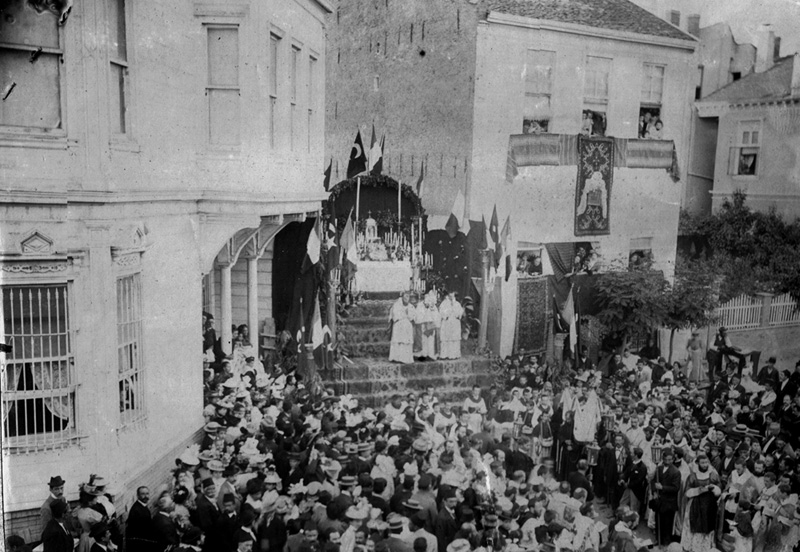 |
La Fête Dieu procession outside a church in Istanbul (could be the same church as the etching above). This church is possibly the Dame de l’Assumption in Kadiköy (the Greek Church Agia Euthemia used for many years by the Catholic Assumptionists with a Byzantine rite), foundations laid in 1859 and completed in 1863. (source Rinaldo Marmara Istanbul Latin Cemaati ve Kilisesi). However images below of the surroundings of this church shows this is unlikely, so for now the building location is a mystery.
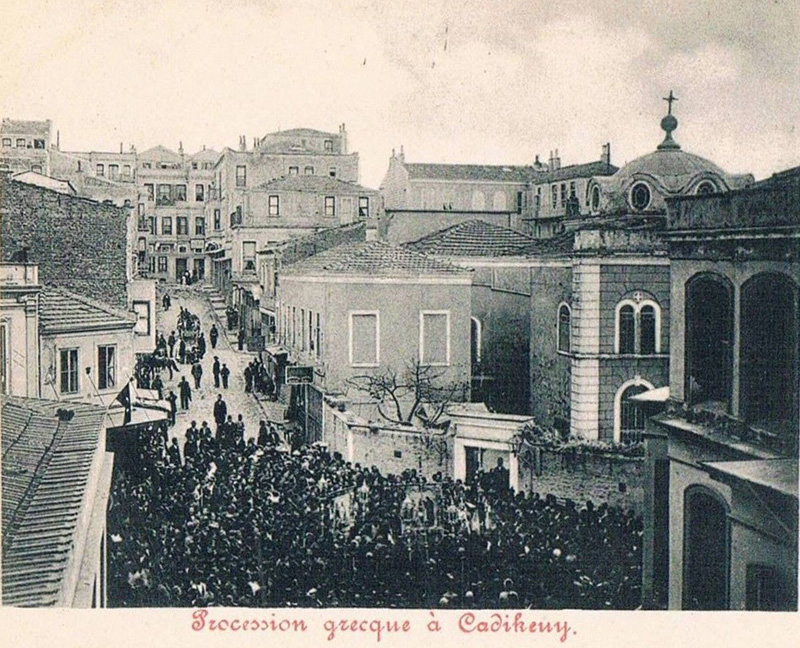 |
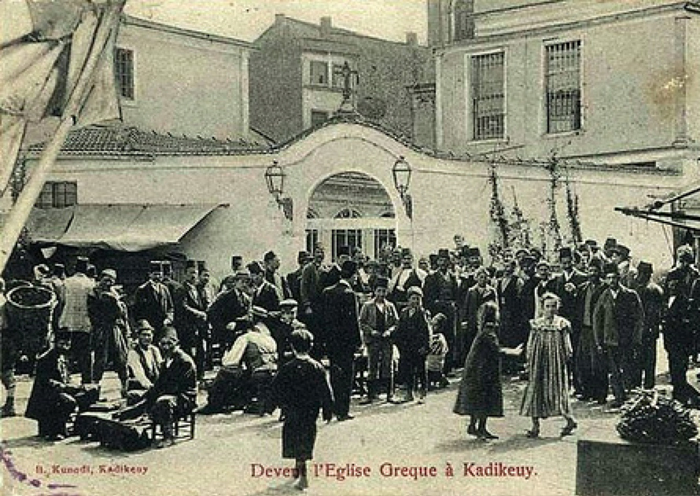 |
 |
What looks like to be a Catholic Street procession in Constantinople, possibly Pangalti area that had a significant Catholic population.
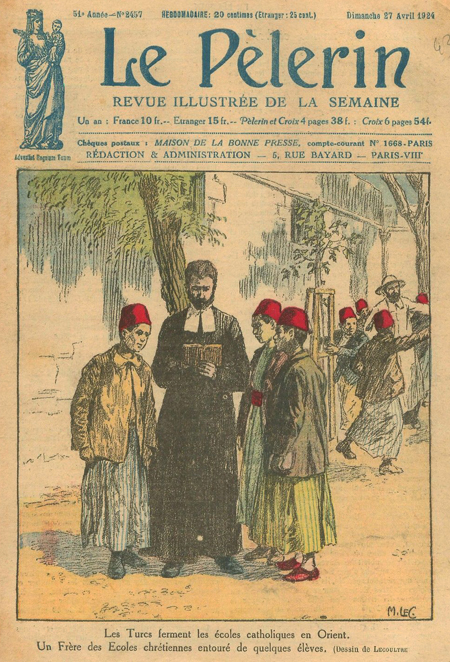 |
A rather fanciful depiction of the moment of closure of a Catholic school in Turkey, published in France on the cover of a French Catholic magazine, ‘Le Pèlerin’ from 1924, a magazine from 1873 still published today. In reality none of the students in such a school would be Muslim, so the red fezzes are the artists impression of how ‘Turks’ look like. What is true is that there were a whole range of laws enacted with the establishment of the Turkish republic in 1923 and continuing to the 1930s restricting the activities of what the state termed ‘Foreign Schools’ as Catholics (and Protestants) were not seen as native citizens on the whole. French and Italian schools who initially resisted removal of crosses from their walls were kept shut. In 1925 all foreign teachers were put to a test on their Turkish and knowledge of Turkish history and geography and those deemed by the state not to reach the required standard were fired. Students who failed in the Turkish lesson were deemed to have failed the year. The Istanbul English High School for Girls initially refused to accept imposed Turkish teachers, was closed by the authorities and later re-opened when they yielded. In 1927 St Paul Cheri Catholic school was closed by the government for not cooperating with the appointed Turkish teachers. In 1928 the Bursa American College was closed when it was discovered that 2 registered Muslim students were in fact Christian. In March 1931 all Turkish citizens including Christians were forbidden to go to these religious schools primary section, which had to then almost entirely close as by then the foreign communities were minor. In 1935 new laws meant foreign schools in addition to the already imposed Turkish, Turkish history and geography had to also give classes in sociology, again in Turkish by Turkish teachers and had to follow Turkish holidays, couldn’t open new classes or schools and class sizes couldn’t be increased. All these have over time reduced the pool of foreign established schools dating mostly from the 19th century, that continue to give education in those other subjects in these ‘Levantine’ languages and the competition to get into these is as fierce as ever as mainstream schools still struggle to provide the required level of foreign language training for the masses that is seen as essential in the modern world.
An example of Catholic charity work in Turkey.